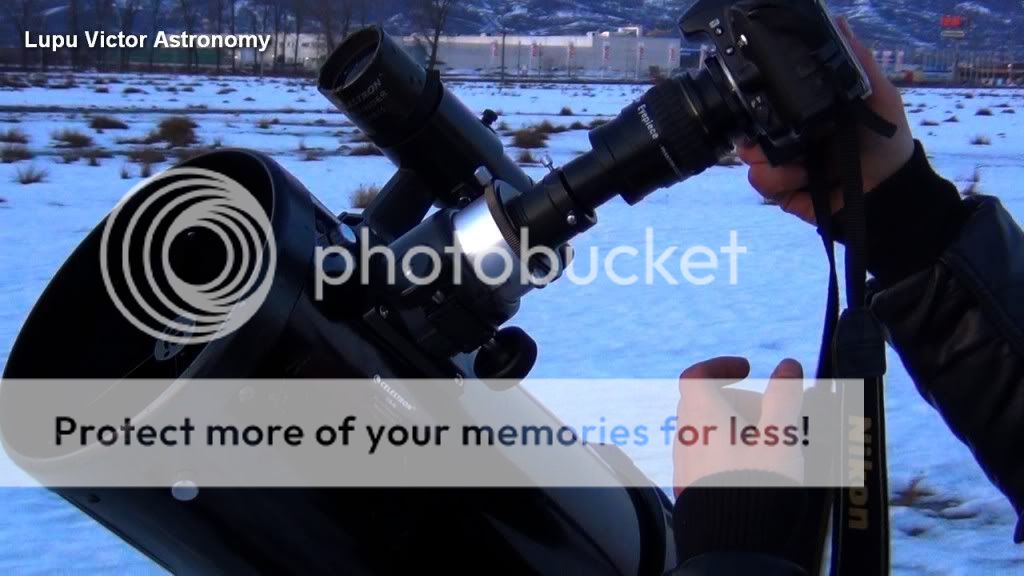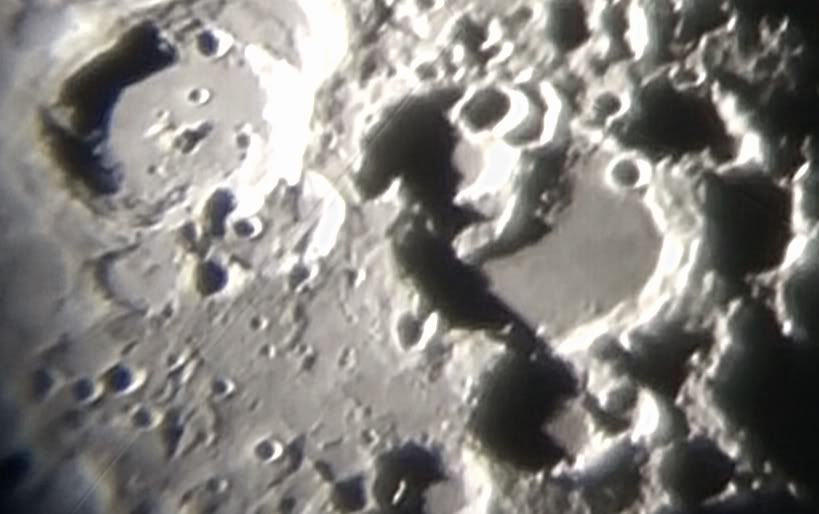This area has three craters categories: large, medium and small. Maurolycus is the largest of them. Light falling on these craters on the night of January 30 greatly advantaged image quality.
The floor of Maurolycus (114 km) is very well revealed to our eyes. This is a complex crater and has several outstanding features such as the peak of the center, Maurolycus J small crater (9 km) and one on the southern edge, Maurolycus A (15 km). Interesting to note, a second rim from south west is an extension of Maurolycus. This rim is a reminder of another crater over which overlapped Maurolycus.
Clairaut (75 km) is also a complex crater (but on a smaller scale) because it is composed of many overlapping craters on its edge: Clairaut A (36 km), B (43 km) and S (22 km).
We can not see the floors of Heraclitus and Licetus (90/75 km), at this phase of the moon, but only their outline.
Other craters seen here are Baco (69 km) and Cuvier (75 km).
Baco (69 km), is a lunar impact crater that lies in rugged mountainous areas of the south, on the near side of the Moon. The rim and the inner wall were eroded and affected by countless minor impacts from the initial formation of the crater. As a result, all terraces have been affected harmoniously, and the rim is covered by several small craters. Interior floor is almost flat, with no central characteristic peak at the midpoint.
Magnitude: -10.82
Phase: 0.46
Distance: 399.283 km
Illuminated: 45.6% (0% = New, 100% = Full)
Astronomical instrument: Celestron C8-Newtonian telescope,
Eyepiece: Plossl 20mm, 2x Barlow
Mount: CG5 (EQ5)
Camera: Sony CX130
Filter: no
Date: 30.01.2012
Location: Baia Mare, Romania
Processing: FastStone Image Viewer
In the picture below are labeled craters and other lunar features in the region. To better understand this photo, you should note that the label with the name or the letter of larger craters could be found at their center, and on the small craters, you should find them around them, usually above.
The floor of Maurolycus (114 km) is very well revealed to our eyes. This is a complex crater and has several outstanding features such as the peak of the center, Maurolycus J small crater (9 km) and one on the southern edge, Maurolycus A (15 km). Interesting to note, a second rim from south west is an extension of Maurolycus. This rim is a reminder of another crater over which overlapped Maurolycus.
Clairaut (75 km) is also a complex crater (but on a smaller scale) because it is composed of many overlapping craters on its edge: Clairaut A (36 km), B (43 km) and S (22 km).
We can not see the floors of Heraclitus and Licetus (90/75 km), at this phase of the moon, but only their outline.
Other craters seen here are Baco (69 km) and Cuvier (75 km).
Baco (69 km), is a lunar impact crater that lies in rugged mountainous areas of the south, on the near side of the Moon. The rim and the inner wall were eroded and affected by countless minor impacts from the initial formation of the crater. As a result, all terraces have been affected harmoniously, and the rim is covered by several small craters. Interior floor is almost flat, with no central characteristic peak at the midpoint.
Magnitude: -10.82
Phase: 0.46
Distance: 399.283 km
Illuminated: 45.6% (0% = New, 100% = Full)
Astronomical instrument: Celestron C8-Newtonian telescope,
Eyepiece: Plossl 20mm, 2x Barlow
Mount: CG5 (EQ5)
Camera: Sony CX130
Filter: no
Date: 30.01.2012
Location: Baia Mare, Romania
Processing: FastStone Image Viewer
In the picture below are labeled craters and other lunar features in the region. To better understand this photo, you should note that the label with the name or the letter of larger craters could be found at their center, and on the small craters, you should find them around them, usually above.
 |
| The image above was done in 12 February 2011. |










 Saturday, March 12, 2016
Saturday, March 12, 2016
 Unknown
Unknown
















